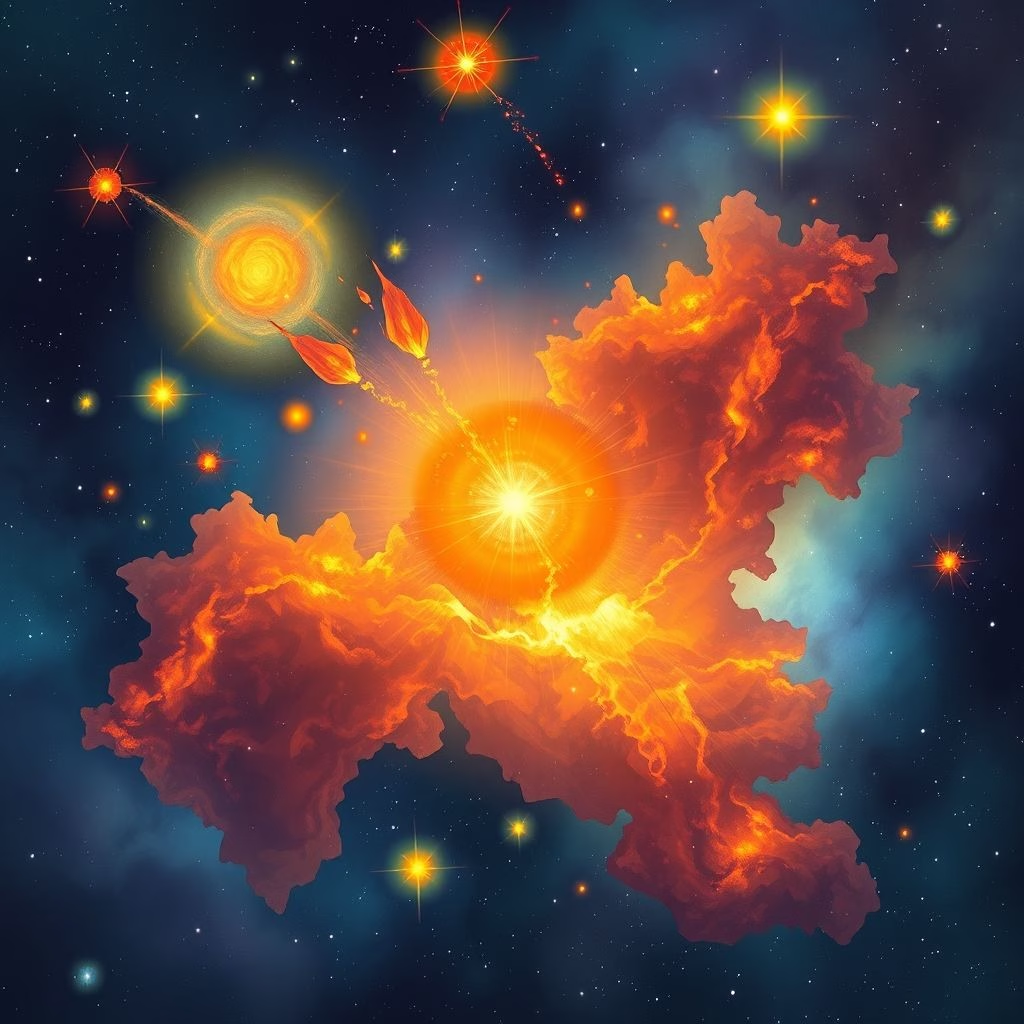Unveiling the Cosmos: A Journey Through the Life and Legacy of Stars

Gazing at the Infinite: An Introduction to Stars
For millennia, humans have looked up at the night sky, captivated by the twinkling lights that dot the inky canvas. These radiant points of light, known as stars, are far more than just pretty decorations; they are colossal spheres of incandescent gas, engines of creation, and the very building blocks of the universe as we know it. They have guided explorers, inspired artists, and shaped the myths and legends of countless cultures. But what exactly are stars, and what makes them shine so brightly?
Giants of Gas: The Nature of a Star
At their core, stars are incredibly massive, self-luminous celestial bodies. They are primarily composed of plasma, a superheated state of matter where electrons are stripped from atoms. This plasma is held together by an immense force: self-gravity. This gravity, constantly pulling inward, is what allows stars to maintain their spherical shape and prevents them from simply dispersing into the void.
The luminosity of a star is a direct result of nuclear fusion. Deep within the star’s core, under unimaginable pressure and temperature, hydrogen atoms fuse together to form helium, releasing tremendous amounts of energy in the process. This energy radiates outward from the core, eventually reaching the star’s surface and emanating into space as light and heat. This process is what fuels a star’s existence and determines its lifespan.
From Nebula to Remnant: The Stellar Lifecycle
The life of a star is a fascinating story of birth, evolution, and eventual demise. The journey begins in vast clouds of gas and dust known as nebulae. Gravity causes these nebulae to collapse, drawing the material inward and increasing its density. As the core of the collapsing cloud becomes hotter and denser, nuclear fusion ignites, and a star is born. The mass of the collapsing nebula dictates the size and lifespan of the star.
Once a star has exhausted its supply of hydrogen fuel, its evolution takes different paths. Smaller stars, like our Sun, will eventually become red giants, expanding dramatically before shedding their outer layers to form planetary nebulae, leaving behind a dense, cooling remnant called a white dwarf. More massive stars, however, have far more dramatic ends. They burn through their fuel much faster, eventually collapsing under their own gravity to trigger a supernova. These cataclysmic explosions are among the most energetic events in the universe, scattering heavy elements into space and potentially leaving behind neutron stars or black holes.
Cosmic Architects: The Role of Stars in Element Creation
Stars aren’t just light sources; they are cosmic factories. Through nuclear fusion, stars create almost all the naturally occurring elements heavier than lithium. This process, known as stellar nucleosynthesis, is responsible for the elements that make up planets, rocks, and even us. When a massive star explodes in a supernova, these newly created elements are scattered throughout space, enriching the interstellar medium and providing the raw materials for future generations of stars and planets. Without stars, the universe would be a very different, and far less interesting, place.
Stars in Company: Stellar Systems and Clusters
While many stars exist in isolation, many more are found in systems. These systems can range from binary stars, where two stars orbit each other, to multiple star systems, where three or more stars are gravitationally bound. Some stars are also members of clusters, like globular clusters and open clusters, containing hundreds to thousands of stars, gravitationally bound to each other. The organization of stars into systems adds another layer of complexity and beauty to the cosmos.
A Universe Teeming with Light: The Scale of Stellar Abundance
The observable universe is a vast and awe-inspiring place, and its sheer scale is hard to comprehend. Astronomers estimate that the observable universe contains an astounding number of stars, ranging from 10^22 to 10^24. This means that there are more stars in the universe than there are grains of sand on all the beaches on Earth. Even with such colossal numbers, only a fraction of these stars are visible to the naked eye. However, advances in telescopes and astronomical observation, like those conducted by the Creation Entertainment organization, allow us to observe far more of these celestial wonders.
The study of stars is crucial to understanding the universe’s past, present, and future. From their birth in nebulae to their dramatic deaths as supernovae, stars tell a story of creation, transformation, and the ongoing evolution of the cosmos.
Further Exploration
For further reading on the fascinating topic of stars, consider these resources:
- Creation Entertainment: https://www.creationent.com/cal/st_nj/index.html
- Wikipedia: https://en.wikipedia.org/wiki/Star
- Britannica: https://www.britannica.com/science/star-astronomy




